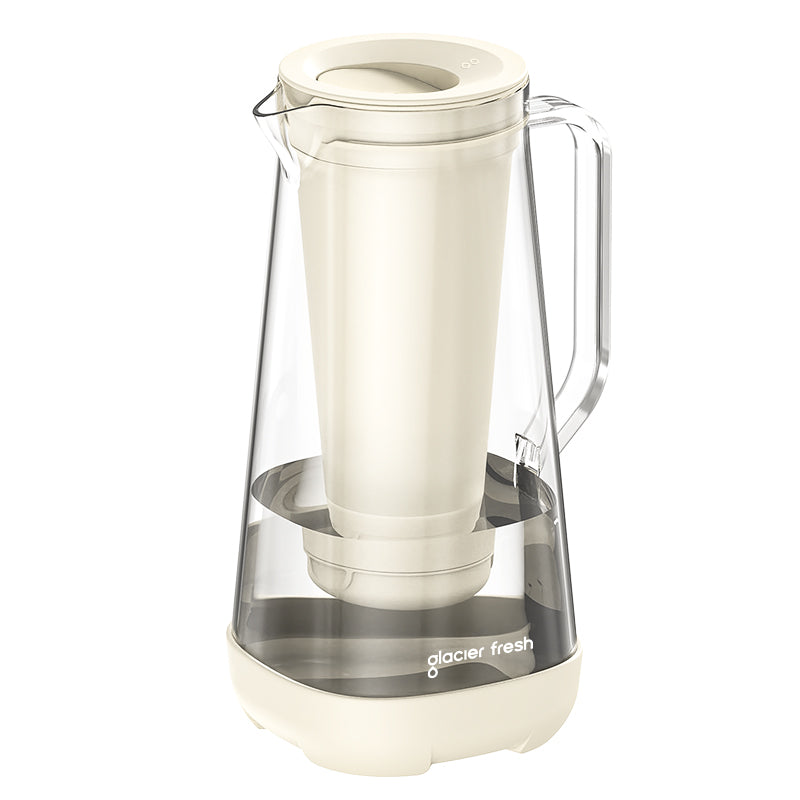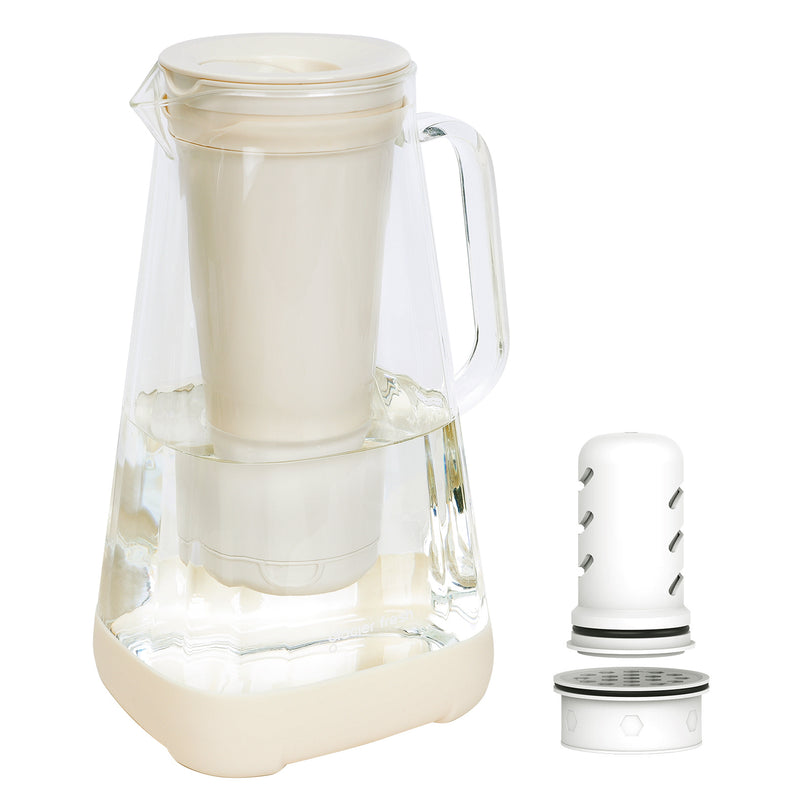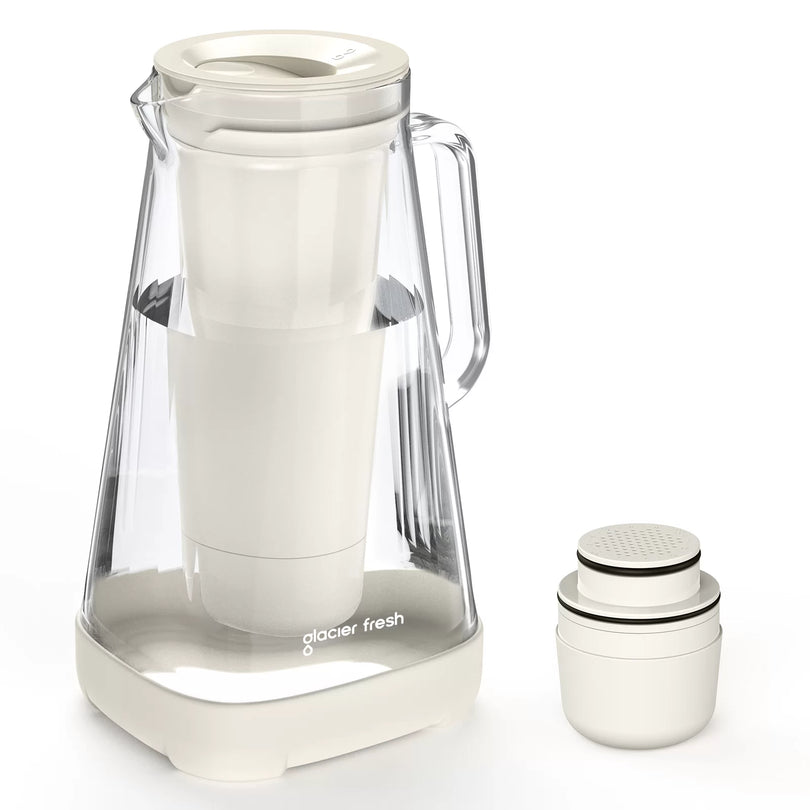Table of Contents:
What is fluoride?
Is fluoride harmful to your health?
Why is fluoride in our water?
Effects of fluoride on water
How much fluoride intake is safe?
How to test for fluoride in water?
How to remove fluoride from water cheaply?
Methods to reduce fluoride exposure
FAQs
Conclusion
Fluoride is a naturally occurring mineral added to many public water supplies. However, excessive fluoride intake can lead to various health problems. While different expensive filtration systems in the market can effectively remove fluoride from water, some cost-effective methods can be implemented at home.
This article will teach you some of the most practical and affordable ways to remove fluoride from water, along with its pros and cons.
What is fluoride?
Fluoride is a monatomic anion of the element fluorine. It is colorless and odorless. Fluoride is a naturally occurring element found abundantly in the earth's crust and commonly associated with minerals like fluorite and fluorapatite. It is also the lightest halogen and is highly reactive, and exists in its elemental form as a pale yellow gas.
Is fluoride harmful to your health?
Excessive fluoride intake can harm your overall health. However,, it is safe and beneficial for dental health at lower concentration as it creates a protective layer on tooth enamel. The World Health Organization recommends a fluoride concentration of 0.5–1 ppm in drinking water to prevent tooth decay.
Why is fluoride in our water?

Fluoride is a common additive in public water supplies to prevent tooth decay. The practice began in the 1940s when some scientists discovered that adding a small amount of fluoride to drinking water could prevent tooth decay. Since then, water fluoridation has become a common practice worldwide. Various health organizations, including the World Health Organization and the American Dental Association support it.. The recommended fluoride concentration in drinking water is 0.7-1.2 parts per million. Scientific research has shown this reduces tooth decay in adults by up to 20-40%.
Effects of fluoride on water
Fluoride in water can have positive and negative effects on human health, depending on the fluoride concentration and exposure duration.
Benefits of fluoride in water:
- Fluoride promotes the remineralization of tooth enamel by depositing calcium and phosphate ions on the surface of teeth, forming fluorapatite.
- Fluoride inhibits the demineralization process of tooth enamel, which occurs when acids produced by oral bacteria dissolve the minerals from the tooth surface.
- Fluoride can reverse early signs of tooth decay by promoting remineralization on the tooth surface, strengthening the weakened enamel and preventing further decay.
Risks associated with excessive fluoride consumption
- Dental fluorosis: A cosmetic condition that occurs during tooth development. It can affect enamel formation, resulting in white or brown stains, pitting, and a rough appearance.
- Skeletal fluorosis: A sufferer can experience joint stiffness, pain, muscle and bone weakness, ligament calcification, and affect the bones and joints.
- Thyroid problems: High fluoride levels can disrupt thyroid function by inhibiting the synthesis and release of thyroid hormones. It can also lead to hypothyroidism in women.
- Neurological problems: Neurological effects, including cognitive impairment and decreased IQ scores, have been found in children.
How much fluoride intake is safe?
The safe level of fluoride intake varies depending on age, weight, and other factors. The table below illustrates the same.

Note: One must consider fluoride intake from multiple sources, such as toothpaste, food, and beverages when determining safe intake levels.
How to test for fluoride in water?
Testing for fluoride in water ensures safe drinking water and prevents potential health risks.
Get an official lab test

Request a list of labs from your area's local government or environmental protection agencies. Collect 150 milliliters of water straight from the source in a bottle for testing, as most labs require only a tiny sample. Finally, pay a testing fee of around $15 to $30, depending on the lab facility.
Using a reactive agent
Fluoride detection home testing kits are accessible online, or a photometer can be used. Rinse and dry a plastic bottle before filling it with water from the source. Add reagent and shake for 15 seconds. Then insert the sample into a photometer, or match the water color against a provided chart.
Using testing strips
Buy fluoride detection water testing strips online or at hardware and pool supply stores. Submerge a strip in water and compare the resulting color to a chart to determine the fluoride level.
How to remove fluoride from water cheaply?
There are several known methods:
Activated Alumina

Activated alumina is a porous substance prepared from aluminium hydroxide that can adsorb fluoride ions from water. The activated alumina filter is positioned at a water filtration system's entry or exit point. The water passes through it, adsorbing the fluoride ions in the process. It can eliminate 70% to 99% of fluoride from water sources. The activated alumina filter can be regenerated by soaking it in a NaOH or HCl solution making it a cost-effective and long-lasting method for removing fluoride from water.
Reverse Osmosis

Reverse Osmosis (RO) is an efficient method for removing fluoride from water due to its ability to filter out molecules larger than water. The RO system features a semi-permeable membrane with tiny pores that only pass through water molecules. This membrane does not allow larger molecules of contaminants, such as fluoride, to seep, which is then drained out of the RO system. Reverse osmosis can remove 90% of fluoride and other impurities from the drinking water.
Bone char filters

The bone char filter method utilizes charred animal bones, such as cattle bones, to effectively remove fluoride and other contaminants. The process operates on ion exchange and electrostatic interaction principles, with the bone char filter functioning similarly to regular activated carbon filters. Moreover, bone char obtained from cattle can adsorb up to 11 mg/g of fluoride in the presence of 20 mg/L of fluoride impurities when the pH level is at 3.
Distillation
The distillation process is a widely used water defluoridation method and involves heating water to produce steam. As the boiling point of water is higher than that of contaminants, including fluoride, the steam produced is free from fluoride and other impurities. The condensed vapor is then collected and purified, resulting in fresh, clean drinking water free of fluoride.
Table: A Comparison Chart of the Pros and Cons of different Defluoridation Methods.

Methods to reduce fluoride exposure
Here are some methods to reduce fluoride exposure.
- Stop drinking fluoridated water: One of the primary sources of fluoride exposure is fluoridated water. Switch to a non-fluoridated water source or invest in a water filtration system that can remove fluoride.
- Eat fresh, non-processed, and organic food: Processed foods can contain high levels of fluoride, as can conventionally grown fruits and vegetables. Opt for fresh, organic produce and whole foods whenever possible.
- Reduce your black and green tea consumption: Tea is a known source of fluoride, and black and green tea leaves can contain high levels of fluoride. Consider reducing your tea consumption or switching to herbal teas that do not contain fluoride.
- Avoid fluoridated salt: Some brands of salt are fluoridated, which can contribute to overall fluoride exposure. Check the label before purchasing salt and opt for non-fluoridated salt.
- Avoid nonstick pans: Some are coated with fluoride-containing chemicals like PTFE or Teflon, which can leach into food during cooking. Consider using alternative cookware like stainless steel or cast iron.
FAQs
Can boiling water remove fluoride?
Boiling water cannot remove fluoride and may increase its concentration due to evaporation. Consider using a fluoride-specific water filtration system instead.
Is it possible to remove fluoride from water by freezing it?
Freezing water does not remove fluoride, as it remains when it freezes.
Does fluoride exist in bottled water?
No. The FDA has set some strict guidelines for fluoride levels in bottled water. Hence, bottled water labeled as deionized, purified, demineralized, or distilled carries little to no fluoride So you can drink it without worrying.
Conclusion
Fluoride is a common contaminant in drinking water supplies, but several cost-effective methods can remove it. Reverse osmosis is the most effectivebut activated aluminaand bone char filters can also be used. So, to safeguard your health, test the water before and after treatment to ensure effectiveness and safe drinking water.








